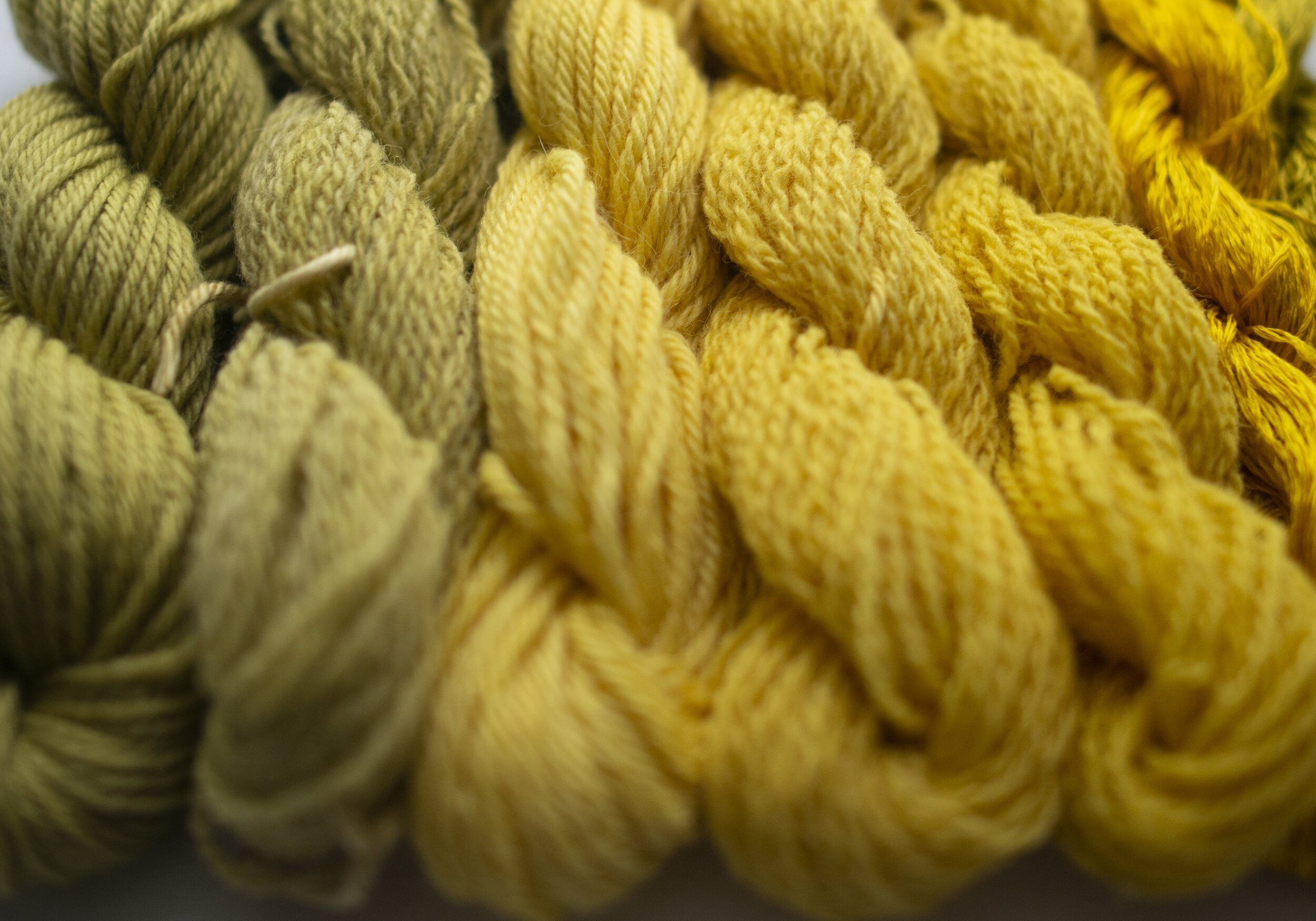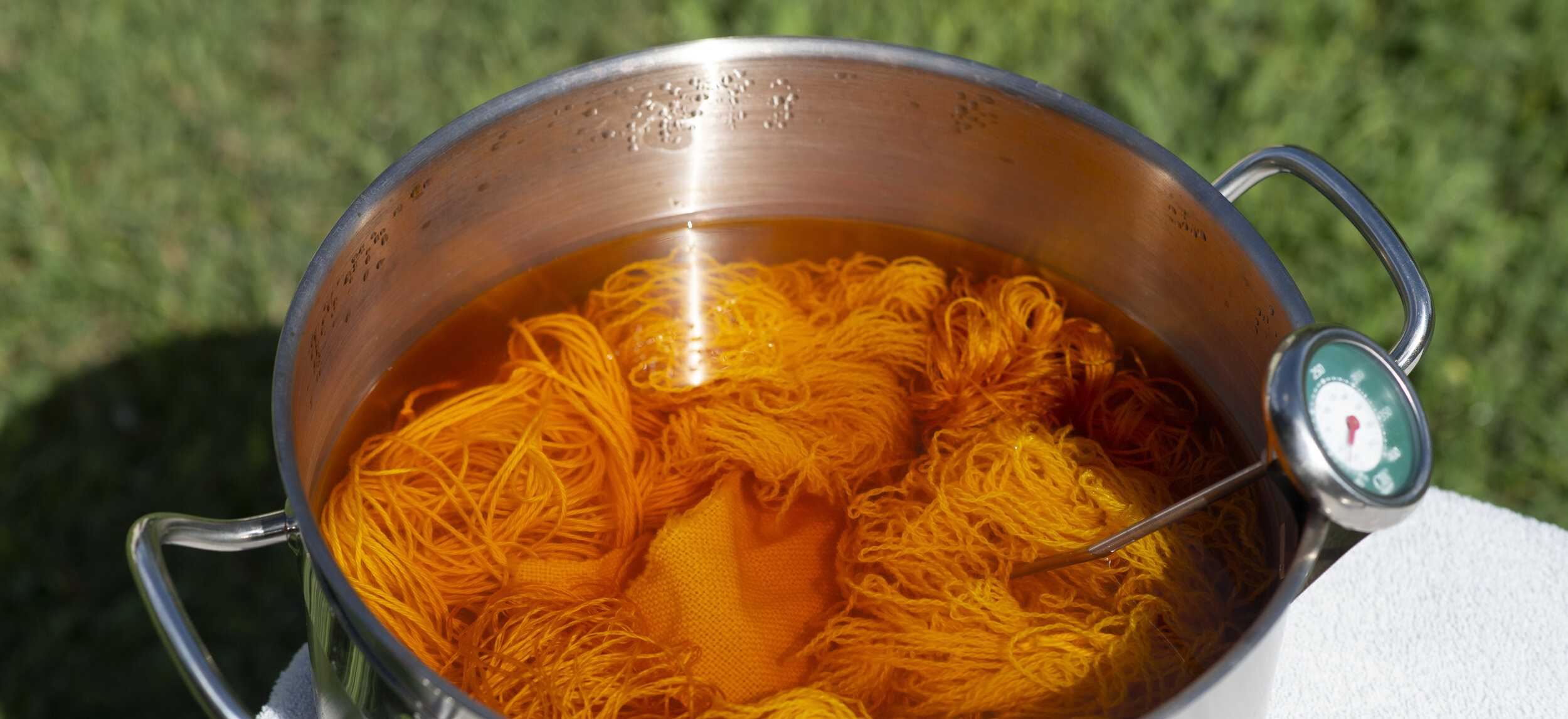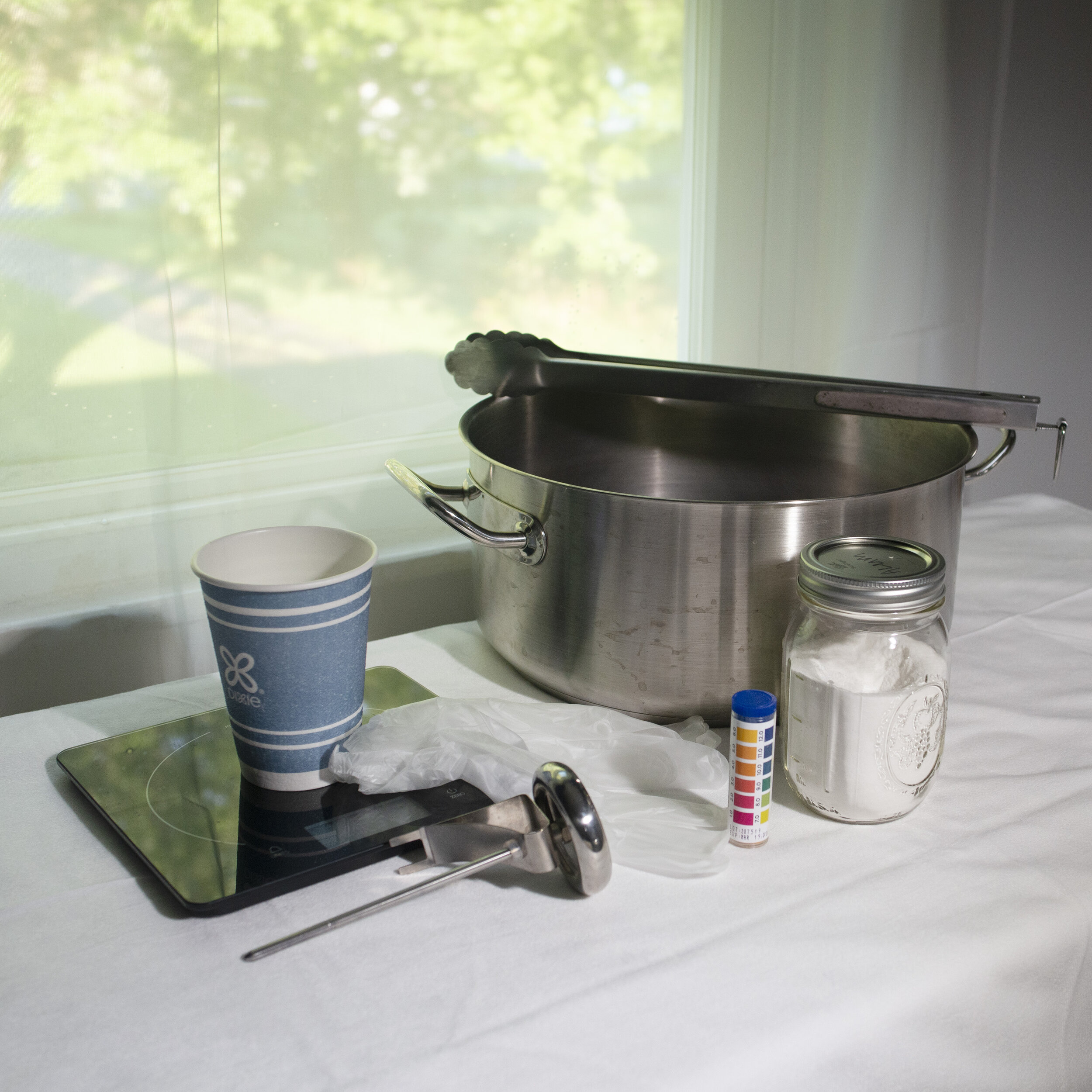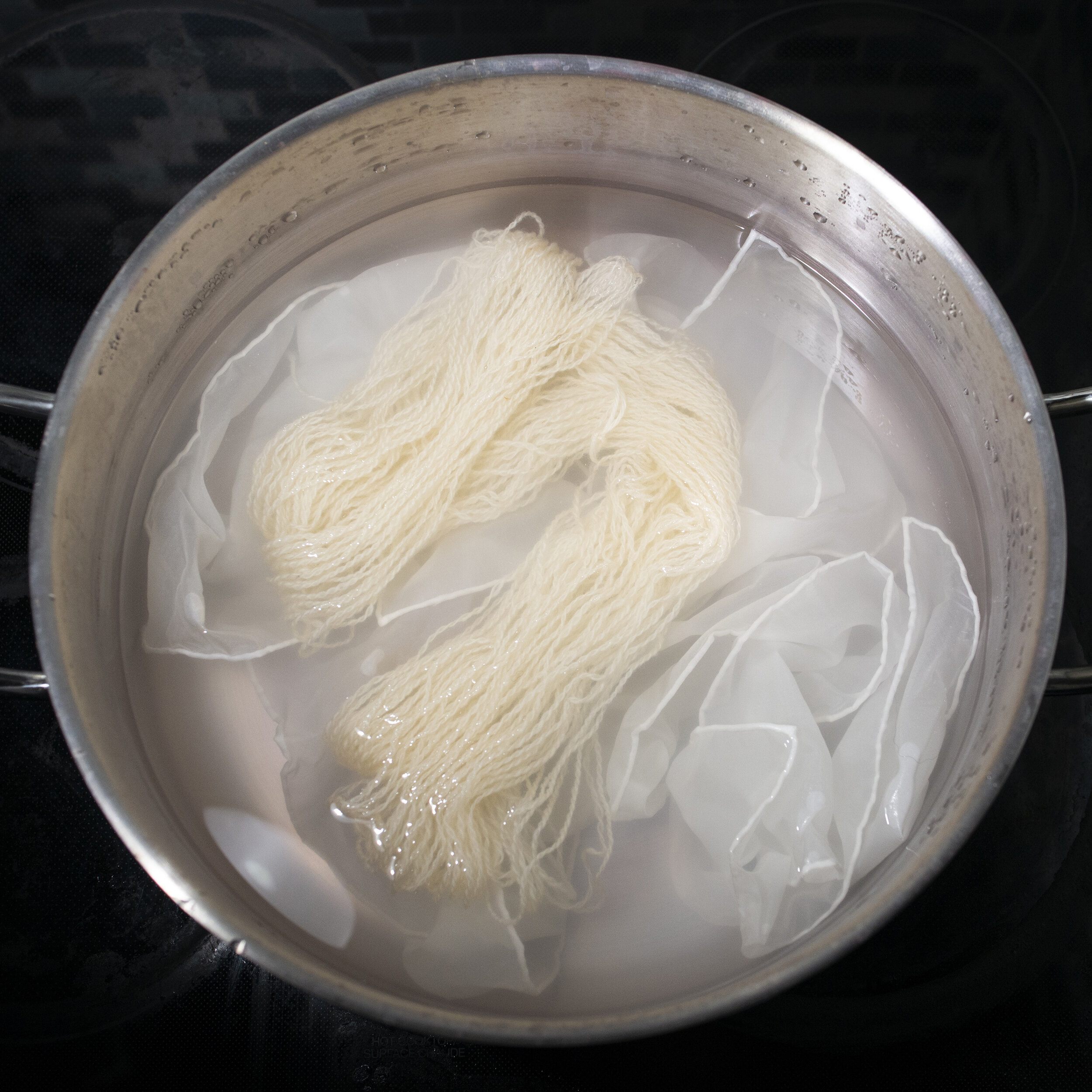
Marigold Extract
A Guide to Marigold Extract
Shepherd Textiles Marigold Extract is made from the petals of the edible Mexican marigold, tagetes erecta. Marigold flowers contain a potent dyestuff called lutein—the same compound that makes egg yolks yellow. It gives strong, clear yellows on natural fibers, from pale lemon colors all the way to dark sun yellow hues. It has a good affinity for both animal and plant fibers, including cotton. Use at 5% for medium yellow shades. Our Marigold Extract is produced sustainably by recycling unsold marigolds grown as temple offerings in India, and is produced by a GOTS (Global Organic Textile Standard) certified manufacturer.
1. Background on Marigold
The Mexican marigold, tagetes erecta, was originally native to central and northwestern Mexico around the state of Michoacán. However, because of its gorgeous orange and yellow flowers and the ease with which it can be grown, it has become a popular flower cultivar all over the world. In the United States it is mostly an ornamental, but in Thailand the flower petals are also used as a garnish for salads. In India marigolds are grown on a mass scale and sold on the streets outside of temples, often sewn into garlands that are used as offerings to deities and holy places. The flowers are considered to be auspicious, and their pleasant perfume is impossible to miss. Shepherd Textiles Marigold Extract is made from surplus marigold garlands: rather than let the flowers go to waste, they are saved and the color is extracted from the beautiful petals.
The primary dyestuff in tagetes erecta is a carotenoid called lutein. Recent meta-analyses indicate that lutein may have anti-inflammatory and neuroprotective benefits, and might also prevent degenerative eye problems (Mitra et al. 2021:2). Lutein is found in smaller quantities in carrots, salmon, and cantaloupe. If you dye fabric with Marigold Extract and think the color reminds you of egg yolk, your eyes do not deceive you: lutein is also what gives yolks their deep yellow color. Marigold Extract is one of our favorite natural dyes to work with, as it is pleasant-smelling, very strong, and not too fussy about parameters like PH or specific temperatures. With an alum mordant it gives a clear, bright yellow on all fibers, and is a good choice for hard-to-dye fibers like cotton and alpaca.
2. Safety Precautions
DO NOT INGEST. This extract was prepared for textile dyeing, not as an herbal supplement.
Avoid eye contact. If eye contact occurs, rinse with cool water.
Not for use as a cosmetic additive; do not apply directly to skin or hair.
Open carefully to avoid spilling or creating dust.
If a spill occurs, quickly wipe up with a paper towel or disposable rag.
Marigold Extract can permanently dye clothing, countertops, rugs, utensils, or other property. Avoid contact with anything that is not meant to be dyed.
Use only dye pots and utensils dedicated to dyeing. Do not use any pots, containers, spoons, tongs, thermometers, or other utensils that will be used for food preparation.
Marigold Extract, and all dye baths and mordant liquors made while dyeing, should be kept out of reach of children and pets. Use only with adult supervision.
Shepherd Textiles, LLC is not liable for any misuse of this product or any unintended staining of your clothing, workspace, or other property. Use only as directed.
3. Recommended Supplies
Dye pot. Use a dye pot large enough to hold all your fibers, with plenty of room for them to move around and for the liquid to circulate freely. Otherwise, particles of dye may get stuck on the fabric and cause dark splotches.
Metal tongs. A pair of tongs is useful for stirring and taking fabric out. Use tongs dedicated to dyeing, and not for food preparation.
Rubber gloves. Wear rubber gloves while handling extract powder and while handling mordanted/dyed fiber before it is rinsed.
Candy thermometer. The best way to keep track of temperature is to use a candy thermometer that clips to the side of the dye pot.
Scale. Use a scale to weigh out fiber, mordant, and extract powder.
Alum mordant. The alum usually used for mordanting is aluminum potassium sulfate, also known as potash alum. It is the same alum that you can find in a jar in the spice section at the grocery store.
Disposable cup. For mixing the extract powder to a paste.
4. Preparation: Mordanting with Alum
Marigold bonds most effectively to fibers that have been mordanted with alum. For best results, soak your fibers in water for a few hours before mordanting, so that the mordant will penetrate deeply and evenly. Make sure to weigh the fibers first, while they are still dry.
Alum will dissolve quickly into hot tap water.
Heat fibers for an hour at 180F, then allow to cool.
For all fibers (wool, silk, cotton, etc.): Mordant at 12% WOF with alum.
Weigh out the fibers you plan to dye (while they are dry). Multiply that weight by 0.12 to get the amount of alum you will need.
Fill your dye pot with hot tap water, leaving enough room for the fiber.
Weigh out the correct amount of alum and pour it into the dye pot. Mix with a spoon or metal tongs until it has dissolved.
Gently place your fibers into the mordanting solution.
Heat mordant bath to 180F and maintain heat for 1 hour. If you don’t have a candy thermometer, you will have to estimate the temperature. At 180F, steam vapor will be rising off the water but it will not be bubbling. If your mordant bath starts to bubble, turn down the heat.
Stir every 15 or 20 minutes to make sure fibers mordant evenly. If they do not, the dye will take better in some places than others.
After an hour, remove from heat and let cool to room temperature. Once cool, you can immediately proceed to rinsing, or you can leave the fibers to steep overnight in the mordant bath. This will improve results, especially when dyeing thick or tightly woven fabrics.
Remove cooled fibers. Wearing rubber gloves, gently squeeze excess mordant solution back into the pot. Rinse briefly in lukewarm water. The fiber does not need to be thoroughly washed, but any excess alum should be rinsed out. Set aside until ready to dye. Keep out of reach of children and pets.
Dispose of mordant solution according to local guidelines.
Note for cellulose fibers (cotton, linen, etc.): Scour well before mordanting as described above.
For the clearest yellows, we do not recommend pre-treating cellulose fibers with a tannin prior to mordanting. If you do, we recommend using a clear tannin like sumac: darker tannins will cloud the shade of the yellow. In general, handspun, handloom, and organic cotton and linen will take natural dye better than commercial cotton, but both will work with Marigold Extract. However, be sure to scour all cellulose fibers before dyeing them.
Scour cellulose fibers well. Traditionally this is done in a highly alkaline soda ash solution, but standard household detergents like Tide© are equally alkaline (PH 11), so we prefer to just toss the fiber in the washing machine on an high-temperature cycle with plenty of detergent.
[OPTIONAL] Apply a clear tannin to the scoured fabric: sumac and clear gallnut extract are the best choices. To use, fill your dye pot with hot water, dissolve 2-5% WOF of your chosen tannin in the dye bath (check vendor’s instructions—each will need a slightly different WOF) and simmer for an hour. Be very careful to keep the fiber moving around: some tannins have insoluble particles that love to get stuck in fabric, and they can cause splotches later on in the dyeing process. After an hour, let cool, remove fibers and rinse well.
Mordant with alum as described above for protein fibers.

The Recipe
5. Recipe: Sun Yellow
The basic recipe for Marigold Extract is to use 5% weight-of-fabric (WOF) on alum-mordanted fiber to produce a clear yellow. The depth of color will depend on the fiber type and how thoroughly it is mordanted, but marigold tends to apply well to all natural fiber types.
Fill your dye pot with warm water, making sure there is enough room for the fabric to move around and for water to circulate freely.
Adjust the PH to neutral (7) with white vinegar or baking soda. If you don’t have PH strips, just leave it as is: most tap water is close enough to neutral that it will not cause any issues.
Weigh out 5% weight-of-fabric (WOF) Marigold Extract into a disposable cup (multiply the dry weight of the fabric by 0.05 to get the correct amount of extract).
Add a little hot water to the cup and mix to form a thin slurry. Make sure to break up any clumps of powder, otherwise they may cause splotches on your fiber.
Pour the Marigold Extract slurry into the dyebath and mix well. At this point the dyebath will be a deep orange color.
Add your pre-mordanted, wetted fibers to the dyebath.
Raise the temperature to 180°F for protein fibers or 200°F for cotton. Maintain for 1 hour to 1.5 hours, stirring every 20 minutes or so to make sure everything dyes evenly.
After 1 or 1.5 hours, remove pot from heat and allow to cool to room temperature.
Remove the fibers and rinse briefly in lukewarm water to remove any particles of dye. You can either proceed immediately to rinsing with detergent, or hang the fabric up to dry first to help the color set. Make sure to hang it up somewhere where dripping dye will cause no damage.
For final rinsing, we recommend using a PH-neutral detergent sold for textile artists, since they are designed to wash out loose dye. Follow the manufacturer’s directions for best results. Be careful using commercial laundry detergents: most are extremely alkaline, and may shift the color of the fabric. CAUTION: Marigold Extract will bleed if not thoroughly rinsed out after dyeing.
Hang up to dry.
All images and text are copyright of Shepherd Textiles, LLC. Do not reproduce without permission and attribution.








